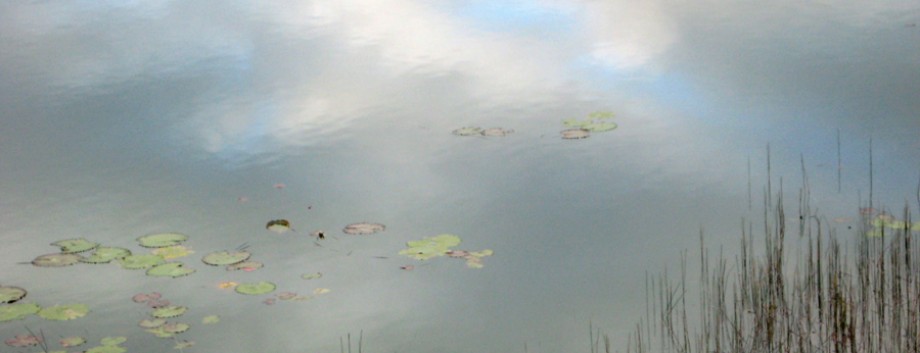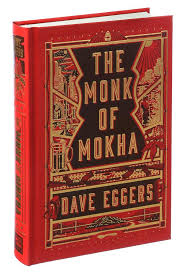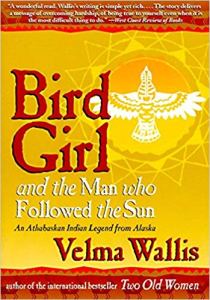In October 2016 I sponsored a pilgrimage beginning in Bolivia that culminated in the Hatun Q’ero village of Ccochamocco high in the Peruvian Andes of the Cusco Region.* About 2,000 Q’ero live spread through small villages on the mountains commonly known as Q’ero. They exist as subsistence farmers—their fields some distance below—living in stone huts with dirt floors, no electricity or running water. Their main diet is potatoes. All families have alpaca and sheep herds and live engaged with the natural world, which they consider sacred. The majority of my relationships with these beautiful people going back 20+ years rests in Ccochamocco.
We spent our time with them in ceremony, soaking up the vibrations of sacred mountains and generally hanging out with the community. At one point, we gathered with the weavers who were gladly showing us their textiles, also hoping for sales.
Weaving is integral to Q’ero life. Passed down through generations since Inka times, they make their clothing, ceremonial and other functional items. In keeping with tradition, women weave. Men knit.
Some weaving is like a rite of passage. When a girl comes of marriageable age, her mother teaches her how to weave a man’s poncho. The wife is always the one who weaves the husband’s poncho—a necessary skill. When a young man is looking for a wife, he knits a colorful hat and applies beads. The more beads he applies, the more patience he is said to have—a signal to a prospective wife of good husband material.

Despacho outside Tiwanaku, Bolivia for permission to enter. Photo: Carla Woody.
Mesas or mestanas, woven altars or bundles used for ceremony, are used to hold sacred stones, other objects and coca leaves, and contain healing or divination properties. They are also used as a ground altar upon which a despacho, or blessing/prayer bundle, is created within ceremony. When weavers create these special use pieces, they imbue intent and prayers within the weaving similar to the making of Tibetan singing bowls.
The Q’eros are known for their textiles and authentic traditional designs. But they have little opportunity to sell their weavings except to the occasional visitor to the villages or on the streets of Cusco to tourists when they venture down.

Carmina weaving outside her home in Ccochamocco. Photo: Carla Woody.
After we’d been with the weavers in Ccochamocco, participant Loretta McGrath suggested I look at having Kenosis Spirit Keepers sponsor them at the annual International Folk Art Market (IFAM) in Santa Fe. Loretta had volunteered with them for years and told me about this prestigious market. I’d never heard of it.
Armed with information from Loretta, I checked into it upon my return home. In the meantime, the Association of Weavers Q’ero Inka Design (Asociación de Tejidores Inka Pallay Q’eros) was formally established July 4, 2017. The cooperative was the first of its kind within Hatun Q’ero.
Their purpose was for the weavers to learn from each other and outside resources in the ways of natural dyeing and best practices to produce high quality items and increase their availability to larger markets. Members include those living between Cusco and the Hatun Q’ero villages, and those who do not step beyond their high-altitude homes. This cooperative represents members from Hatun Q’ero villages of Ccochamocco, Chua Chua, Challma and Qolpacucho.

Members using natural dyes with alpaca wool. Photo: Santos Machacca.
In 2018 I began the lengthy series of communications, information and photo gathering, writing, and finetuning until finally submitting the application by the October 2018 deadline. Then we waited. Would they be chosen? How would we raise the chunk of funds needed to pull it off? I was also concerned about the relatively short time between January notification and the need for the weavers to produce a reasonable number of textiles to bring to market.
All weavings are done completely by hand. No machines of any sort are used. The wool is cleaned, spun using a traditional hand spindle, and woven using 4 stake looms. Hats are hand knitted from alpaca wool in the same manner. It’s a very long process.
There were over 700 applications. Of those, 178 artisans from 50 countries were accepted. The Q’ero weavers were one of those. We celebrated. This was huge. I could envision the beginning of something that would immensely benefit the weavers, their families and larger community. Then the weaving began in earnest.
Santos Machacca, my Q’ero liaison and member of the cooperative, kept me updated. He said that many of the women were weaving day after day starting at 4 a.m. and into the night. I could imagine how sore their fingers must be and how strained their eyes.
The next frontier was obtaining visas. Santos and Remigia Salas Chura, his wife and a master weaver, were designated to represent the cooperative at the market. Given the current political climate in the US, it seemed quite iffy whether they would be granted. But armed with formal invitations from IFAM, the major of Santa Fe and Kenosis Spirit Keepers, visas were granted.
Santos and Remigia arrived in Santa Fe on July 9. It was the first time Remigia had flown or been so very far from home. They were thrilled to be there. Their smiling faces were evidence. Aside from being in Santa Fe—first time in the US—they were rubbing elbows with artisans from all over the world: Algeria, Colombia, Cuba, Ethiopia, Haiti, Iraq, Kenya, Pakistan, Rwanda. Too many to name. The artisan processional in Santa Fe Plaza was truly inspirational.

Peek at the processional. Photo: Carla Woody.
During the market I was there with them in the booth. It was a real pleasure. The Q’ero weavers offered a range of textiles from hat bands to ponchos to mesas to table runners. The latter was something I suggested for Western customers along with coasters and placemats. All in traditional designs. Truly the Association of Weavers Q’ero Inka Design outdid themselves. Offerings were 100% alpaca—no blends—all natural dyes or natural wool, all finely finished. They had undertaken this effort to produce the highest quality—and they did.

Santos and Remigia at the Q’ero weavers booth. Photo: Carla Woody.

Remigia weaving at the booth. Photo: Carla Woody.

Q’ero weavings. Photo: Carla Woody.

Q’ero mesas and hatbands. Photo: Carla Woody.
The mission of Kenosis Spirit Keepers is to help preserve Indigenous traditions. I take the outcome of this endeavor as a big win for the Q’eros—a full return to traditional weaving—as well that we could assist in such an important effort.
The plants needed for dyes grow lower than the altitude of the villages. In order to gather them, the artisans must forage distances from their homes. Perhaps due to this reality, it became common for family weavers to use synthetic dyes for their wool when they became available in the markets about 70 years ago. However, the Association members have returned to natural dyes or natural wool as most traditional.
Fine finishing, or binding the edges, had also been let go. It was rare for see a Q’ero weaving like that even though still beautiful. I can imagine much of their time was taken up with childcare and their herds. I had encouraged the highest quality though, telling Santos the elements that were needed for acceptance at the market. He later told me the weavers had forgotten how to finish edges or never knew. They had sought out elder weavers to teach them.
I want to publicly thank Loretta McGrath for her initial urging and support during the application process. I don’t know how we would have survived without Lisa Flynn who was so willingly by our side offering rides, her fine Spanish and calls back to Peru, as well as ongoing hospitality. I’m grateful to Sachiko Umi and her team at IFAM for patiently guiding me in this first-time effort, and their great care for all the artisans. Really, it was amazing how everything came together. But you know…this never would have come about for these Hatun Q’ero weavers without the generosity of donors, some who knew them and others who didn’t. I hope you are reading this, and realize you supported a dream come true.
Now we look to next year…

Artisans of the 2019 International Folk Art Market. Photo: Marc Romanelli.
***
*The Hatun Q’ero of the Q’ero Nation are known as the Keepers of the Ancient Knowledge and call themselves the children of Inkari, the first Inka. They are widely accepted by anthropologists to be direct descendants of the Inka. They live in isolation at 14,000-15,000 feet in the Andes, as they have for hundreds of years after the conquistadors came, preserving their ancient mystical traditions. The lands of the Q’ero have been declared a cultural heritage site by UNESCO, but that has not brought personal riches to the Q’ero Nation. Some Q’ero have migrated to Cusco and environs hoping for a better life.
I will be sponsoring another pilgrimage in Fall 2020 following along Bolivia’s sacred sites…Tiwanaku, Islands of the Sun and Moon…and into Peru…through Puno, Cusco and once again culminating in Ccochamocco. Check on this spiritual travel page. It should be posted soon.


 This is a coming of age story in a special setting under difficult circumstances. It’s about what happens when norms are stripped away. When suddenly families are forcibly separated… elements of society previously valued devalued…control wrought by fear…what arises as a result…and the ways in which humans hang onto a piece of themselves and seek to thrive.
This is a coming of age story in a special setting under difficult circumstances. It’s about what happens when norms are stripped away. When suddenly families are forcibly separated… elements of society previously valued devalued…control wrought by fear…what arises as a result…and the ways in which humans hang onto a piece of themselves and seek to thrive. I stumbled across a brief note on Olive Oatman researching something else, and read The Blue Tatoo to learn the full history relating to what occurred from 1850 and continuing on well beyond her death in 1903. Olive Oatman’s name became inseparably intertwined with that of the Mojave and Yavapai Indians, a tragic story for all on a number of levels. The complete truth remains elusive. It varied significantly depending on who told the story and when…even becoming an episode of Death Valley Days, the old TV show. The Blue Tattoo may well be the most accurate and comprehensive account, the author Margot Mifflin having depended on historical documents, family diaries, letters and interviews.
I stumbled across a brief note on Olive Oatman researching something else, and read The Blue Tatoo to learn the full history relating to what occurred from 1850 and continuing on well beyond her death in 1903. Olive Oatman’s name became inseparably intertwined with that of the Mojave and Yavapai Indians, a tragic story for all on a number of levels. The complete truth remains elusive. It varied significantly depending on who told the story and when…even becoming an episode of Death Valley Days, the old TV show. The Blue Tattoo may well be the most accurate and comprehensive account, the author Margot Mifflin having depended on historical documents, family diaries, letters and interviews.















 Two Old Women tells of two elders who had lost their usefulness, often falling into complaining in the face of decline. As tradition holds, the duty of providing for them fell to their extended family and others of the tribe, which they did. But the tribe fell upon hard times. Food was almost nonexistent and some successive winters brutal. Finally, the chief made a decision, when the tribe departed in search for a more hospitable home, the two old women were left behind in favor of tribal survival. This meant they were leaving the elders to a certain death. Two Old Women discloses the internal conflict many of the tribe experienced and the process of the women as they faced a fate they did not choose, and the unexpected outcomes.
Two Old Women tells of two elders who had lost their usefulness, often falling into complaining in the face of decline. As tradition holds, the duty of providing for them fell to their extended family and others of the tribe, which they did. But the tribe fell upon hard times. Food was almost nonexistent and some successive winters brutal. Finally, the chief made a decision, when the tribe departed in search for a more hospitable home, the two old women were left behind in favor of tribal survival. This meant they were leaving the elders to a certain death. Two Old Women discloses the internal conflict many of the tribe experienced and the process of the women as they faced a fate they did not choose, and the unexpected outcomes. Bird Girl and the Man Who Followed the Sun is about a girl and boy, living in separate camps of the Gwich’in people. Neither fit in. At a young age, Bird Girl’s father had taught her to hunt and roam along with her brothers. Having tasted that freedom, she took no interest in the never-ending burden of women’s work or taking a husband. Finally pushed to fall in line, she chose to leave home to make her way on her own.
Bird Girl and the Man Who Followed the Sun is about a girl and boy, living in separate camps of the Gwich’in people. Neither fit in. At a young age, Bird Girl’s father had taught her to hunt and roam along with her brothers. Having tasted that freedom, she took no interest in the never-ending burden of women’s work or taking a husband. Finally pushed to fall in line, she chose to leave home to make her way on her own.